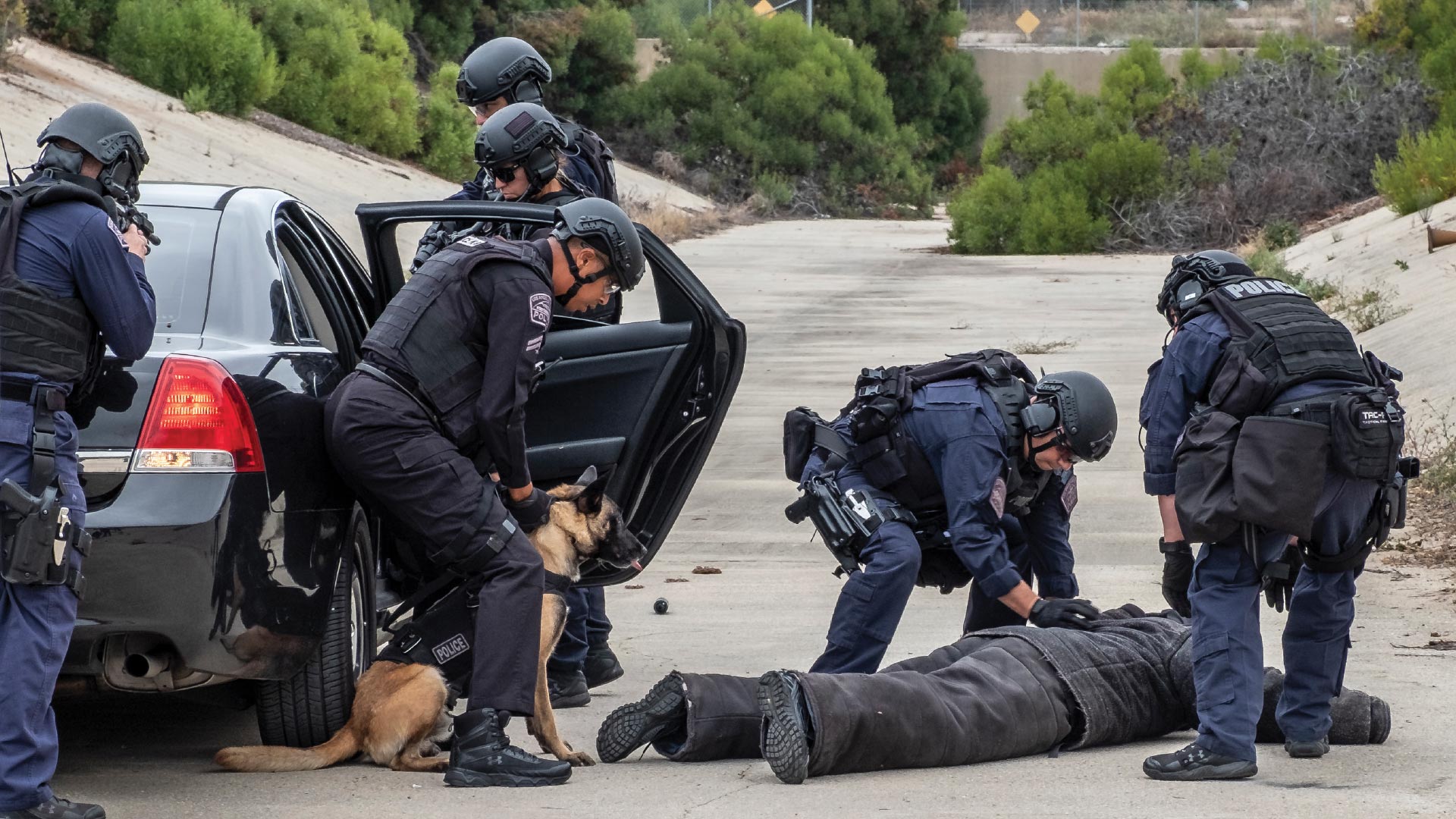
August 26 is National Dog Day, an observance founded in 2004 to celebrate the many contributions dogs make to humans’ quality of life and raise awareness of the importance of dog rescue and adoption. As New York State’s 2013 legislative resolution commemorating the day put it, “Dogs put their lives on the line every day; for their law enforcement partner, for their blind companion, for a child who is disabled, for our freedom and safety by detecting bombs and drugs and pulling victims of tragedy from wreckage.” It’s no surprise that law enforcement is listed first in that description, since K-9s have served in critically important roles for more than 100 years, using their incredible abilities and versatility to make officers’ jobs both easier and safer. In honor of National Dog Day — and as PORAC is sponsoring legislation aimed at setting commonsense statewide standards for K-9 deployment and training — we asked three handlers and trainers to share their insights on the value of our canine partners in law enforcement and how they work to protect California’s peace officers and communities.
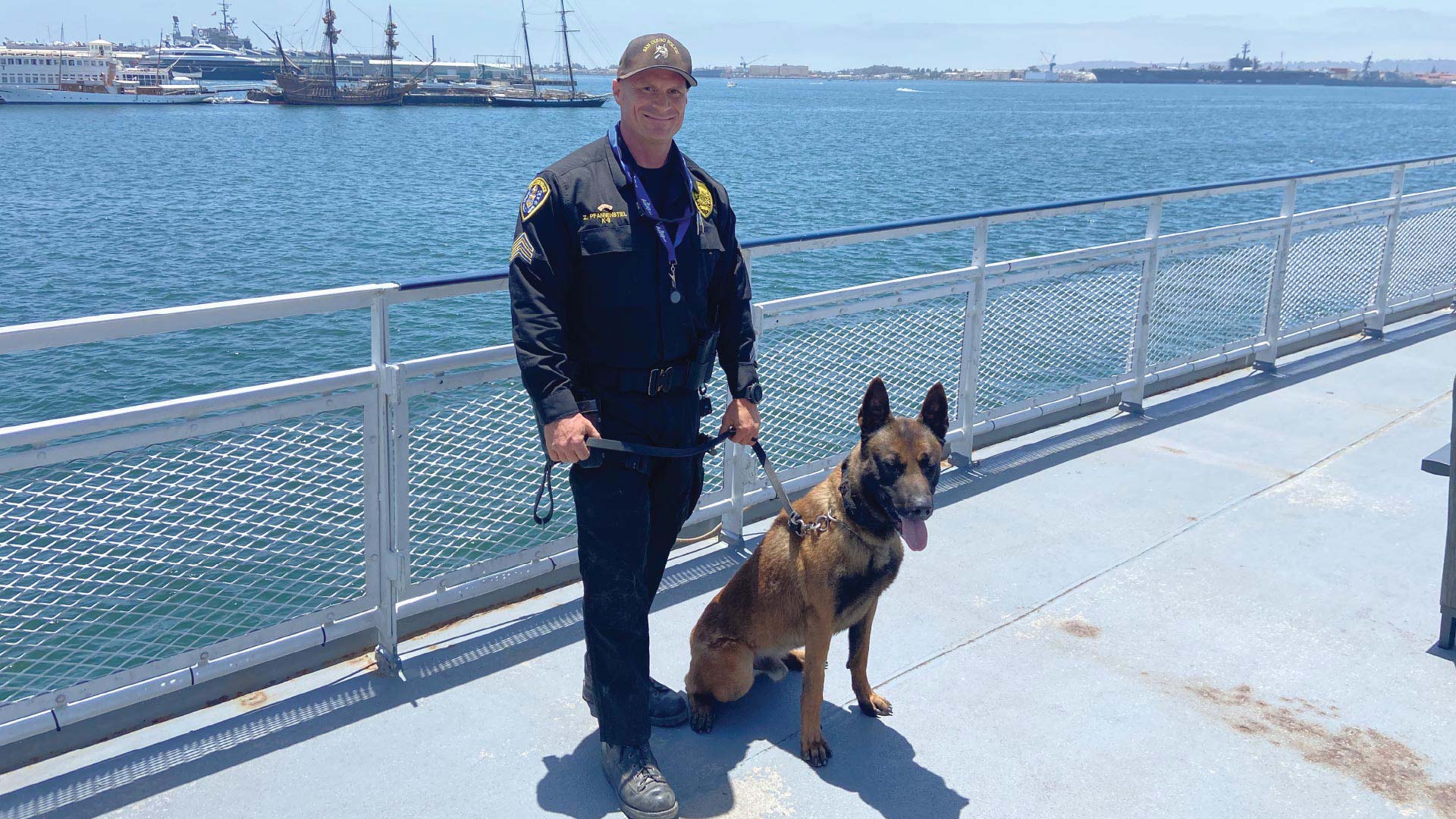
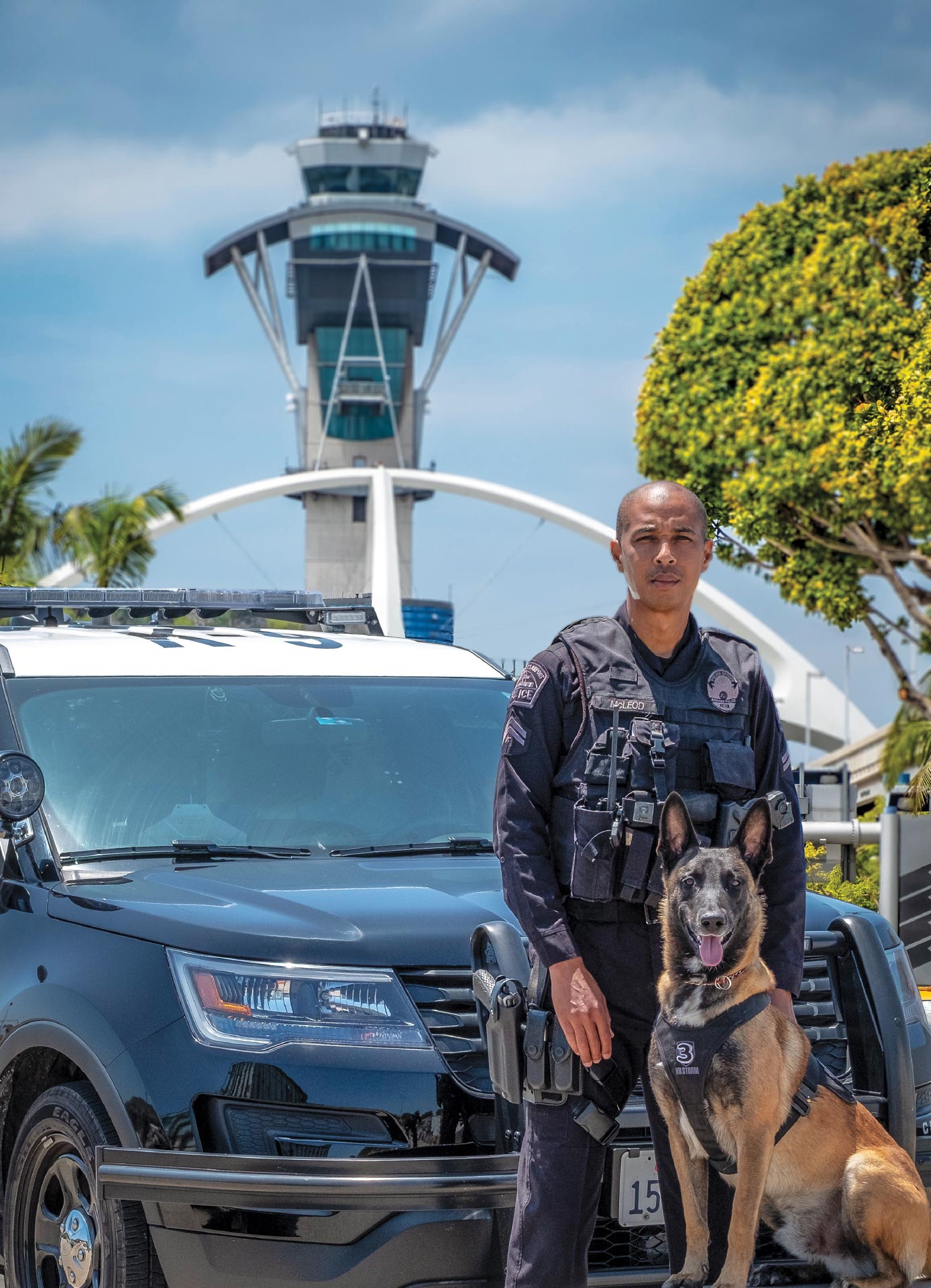
A Nose for Crime
The diversity of available dog breeds, developed over centuries for specialized traits, means there are different canines suited for a wide variety of law enforcement tasks — large dogs that can tackle a fleeing suspect, small ones that can squeeze into tight spaces to search for bombs, social ones adept at soothing traumatized officers and crime victims. But above all, it’s dogs’ renowned sensory capabilities that make them an irreplaceable asset when it comes to sniffing out crime.
“A canine’s sense of smell is about 10,000 times more sensitive than a human’s,” Sergeant Zach Pfannenstiel of the San Diego Police Department’s Canine Unit explains. “Dogs have around 300 million olfactory receptors in their noses, compared to about five to six million in a human. This allows them to detect a wider range of scents at lower concentrations.”
That makes K-9s unparalleled at detecting contraband and other evidence with stunning accuracy, including narcotics, explosives, electronics, and guns and ammunition. For example, they are invaluable in patrolling for potential threats at Los Angeles International Airport (LAX), one of the world’s busiest aviation hubs. The Los Angeles Airport Police Department’s K-9 Unit was created in 2001, when the renewed focus on aviation security in the wake of the 9/11 terrorist attacks made it clear that L.A.’s own dedicated airport police force needed the capability to consistently search for explosive materials. Beginning with three pairs of dogs and handlers, it grew exponentially to become one of the largest explosives-detection canine units in the nation. Some of LAXPD’s dogs are provided by the Transportation Security Administration for the single purpose of detecting explosives, through a federal terrorism-deterrence program that has deployed more than 1,000 canine teams at major airports nationwide to support security and screening operations. The remaining canines belong directly to LAXPD and are dual-trained to apprehend suspects as well as detect explosives. These tasks help to support the Department’s other units, such as tactical operations. “The LAXPD K-9 Unit responds to thousands of calls for service each year for detection purposes and helps mitigate unattended items, vehicles, etc.,” Police Officer III Havon McLeod says. “Additionally, the unit has assisted in the apprehension of dangerous felony suspects. A number of the canine teams have also been recognized and won top awards in police K-9 competitions.”
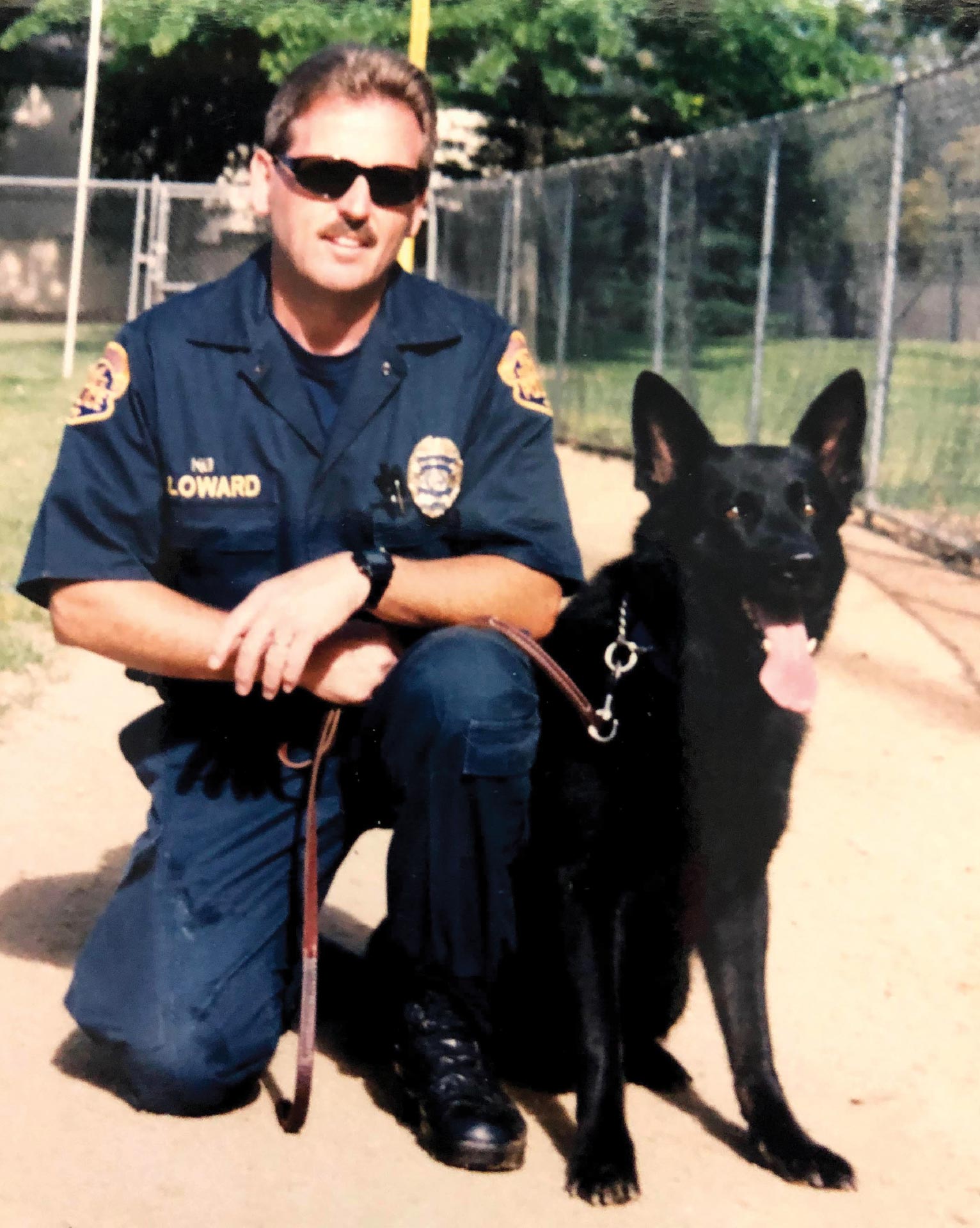
Ron Cloward, now president of Top Dog Police K-9
Training and Consulting (Ron Cloward)
Of course, the same olfactory ability that helps dogs pinpoint the presence of drugs or bombs also makes them adept at tracking people — whether it’s finding missing persons or hunting for fleeing criminals. Ron Cloward, a retired K-9 handler for the Modesto Police Department who is now president of Top Dog Police K-9 Training and Consulting, cites a study conducted by the Lansing Police Department’s K-9 Unit that compared the success of K-9 teams and human officer teams in controlled searches for a hidden suspect. “The K-9 team located 27 out of 29 suspects, with a 93% accuracy rate,” he says. “The officer team located 17 out of 29, with a 53% accuracy rate. What this means is that communities are safer with the use of canines, as more suspects are found. They also save time, which impacts staffing. In this study they hid a suspect inside a 5,445-square-foot building. The canine found the suspect in 1 minute 24 seconds. The officer team took 20 minutes 52 seconds.”
Pfannenstiel says that since “a canine can locate subjects in unconventional locations,” the SDPD uses dogs to search for people wanted for felony crimes and potentially armed suspects, as well as to look for evidence and contraband. “It is much safer to utilize a police dog to search for a concealed felony subject than to have homeowners or officers search for a subject who poses a threat and may be armed with a weapon.”
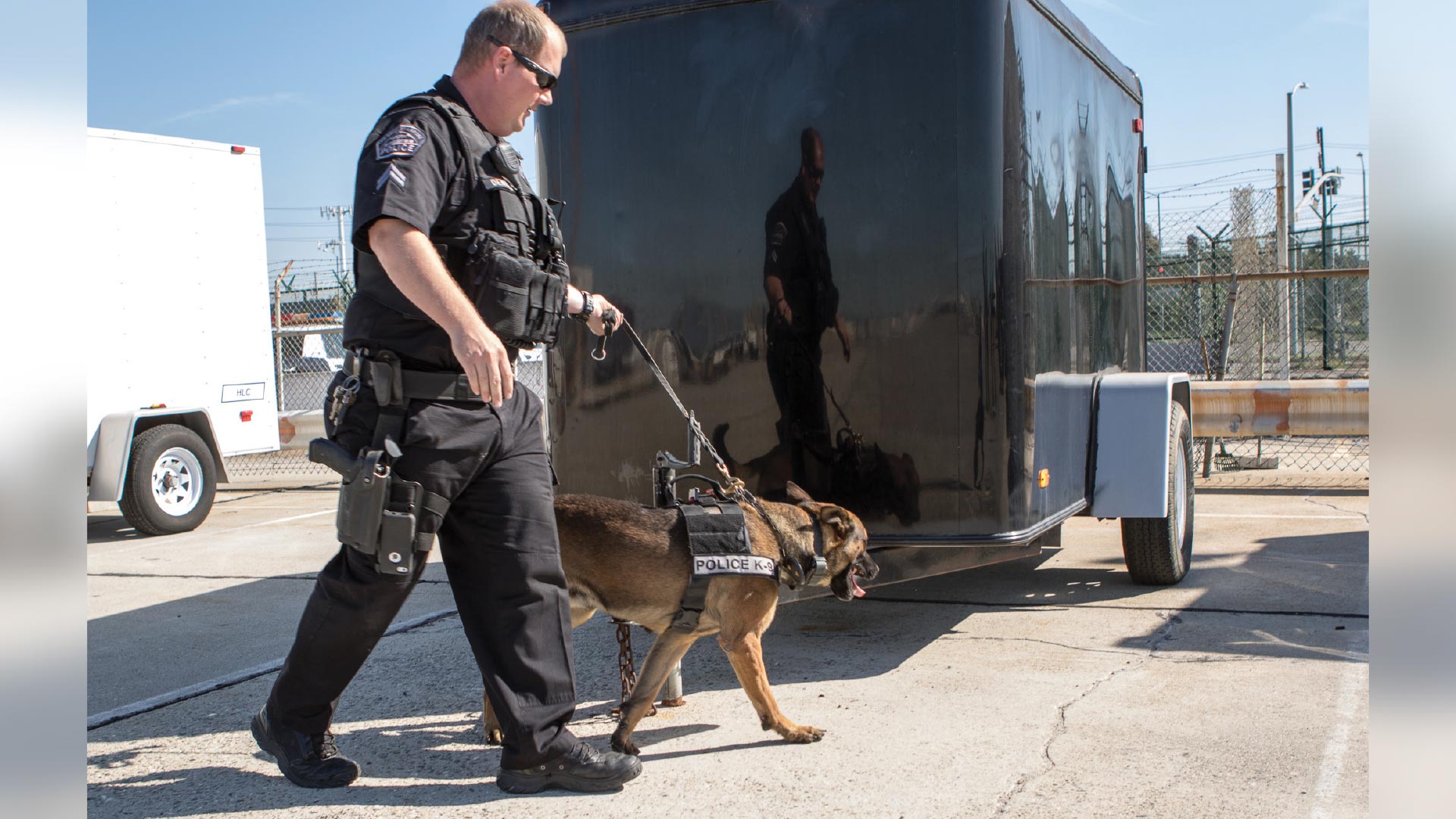
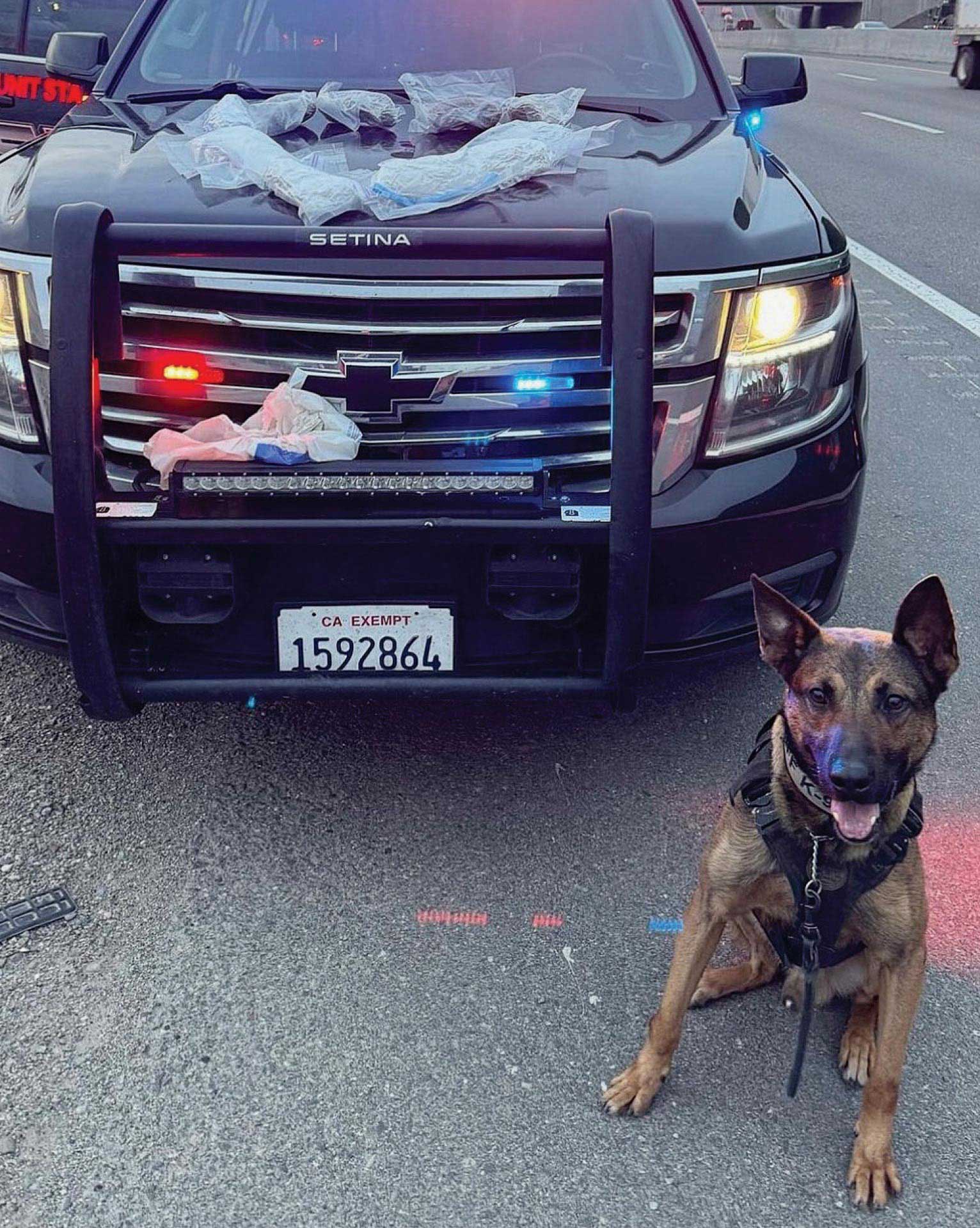
A Tool for Public Safety
All three experts we interviewed emphasized that K-9s support officer and community safety, not only through their physical prowess but also as a means of de-escalation and deterrence.
“A police dog enhances officer safety by allowing officers to maintain a safe distance from potential threats,” Pfannenstiel says. “This strategic positioning provides officers with valuable time to react to a suspect’s actions. The distance not only allows for better planning and contingency preparation, but also helps to slow down incidents, facilitating de-escalation measures.”
The use of dogs combines reliability with adaptability, McLeod notes: “Canines have been a tested and proven commodity over time in assisting law enforcement. They are one of many invaluable tools that officers can rely upon to help mitigate an incident or call for service. News around the world has shown us that technology is not yet infallible; examples can been seen in everyday life. Canines are the only use of force that can be recalled after already being deployed.”
Cloward adds that sometimes deployment is scarcely even necessary. “In so many cases the canine’s presence will result in surrender without any use of force. I can’t tell you how many times people were willing to fight law enforcement until the canine came out of the car.”
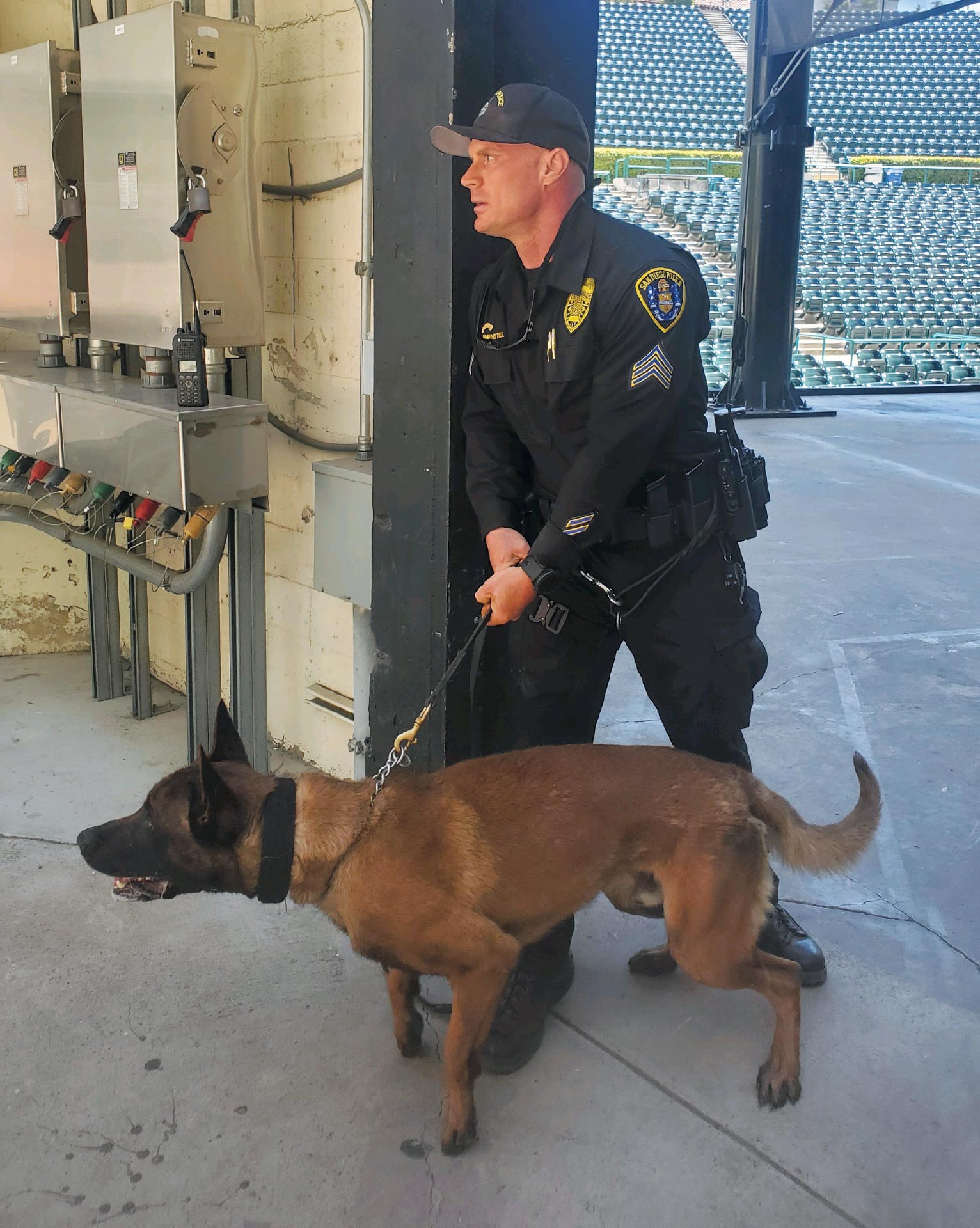
These points are important to dispelling some of the common misconceptions about law enforcement K-9s in the public imagination and the media. “The biggest one is the thought that they are vicious and those are the kind of K-9s we want,” Cloward says. “What we want are social dogs that live through their nose and are trainable. They want to please their handler in everything they do. There is also the idea that they bite everyone. We track what is called bite ratios. A bite ratio is determined by the amount of arrests the dog is responsible for, and in those arrests how many were bitten by the K-9. In most cases, the bite ratio does not make it out of a single digit. The other thing I will say is that K-9s don’t kill suspects, but suspects kill police dogs. This year alone, across the country, six K-9s have been killed in the line of duty.”
Furthermore, Pfannenstiel points out, “a common misconception is that police dogs are unnecessary because officers can perform the same tasks. However, having officers search for concealed, potentially armed subjects puts their safety at significant risk. Canine units do not target specific ethnicities or races. They serve as a reactive, less-lethal tool rather than a proactive one. Canine teams respond to radio calls in a secondary capacity to assist patrol officers who are confronting a potentially violent or armed person.”
And Cloward has a simple response to the argument that new technologies such as drones or robots might be able to replace K-9s: “The one thing about technology is it fails to work sometimes. I never had my canine fail to work. We may not have always been successful, but it worked.”
The disparity between the myths surrounding K-9s and the realities of law enforcement work is why ill-informed legislative efforts to limit the use of police dogs risk doing more harm than good. “Improperly crafted laws could compromise the safety of officers and citizens,” Pfannenstiel says. “This could leave officers without a less-lethal tool to de-escalate situations, which may lead to dangerous encounters. Involving law enforcement experts in the legislative process ensures that regulations are based on practical knowledge and experience, and in turn this promotes the safe use of police dogs while addressing legitimate concerns.”
Cloward states that “legislatures making decisions about something they know very little to nothing about” is one of the main challenges facing today’s K-9 programs. “Is change needed? Yes, it is,” he continues. “We need change in training requirements and standards. We need change in what is being taught and who is doing the training. At the moment there is no state standard for K-9 training, but POST is interested in developing the training standard, and that’s a good thing.”
The key to a successful K-9 program is proper planning, Cloward adds, from selecting the right officers for the job to ensuring that K-9s are well-matched to their handlers and the teams are thoroughly trained. Pfannenstiel says, “Training staff should be well-versed in dog training concepts, tactics, de-escalation, use of force and problem-solving. Without proper regimented training, the canine program will fail due to no direction or accountability.” In addition to ongoing weekly training, SDPD K-9 units start by attending a basic handler academy where the dog learns to trust the handler and the handler learns what the dog is capable of. It typically takes about a year of working together for a K-9 team to be fully bonded, he notes.
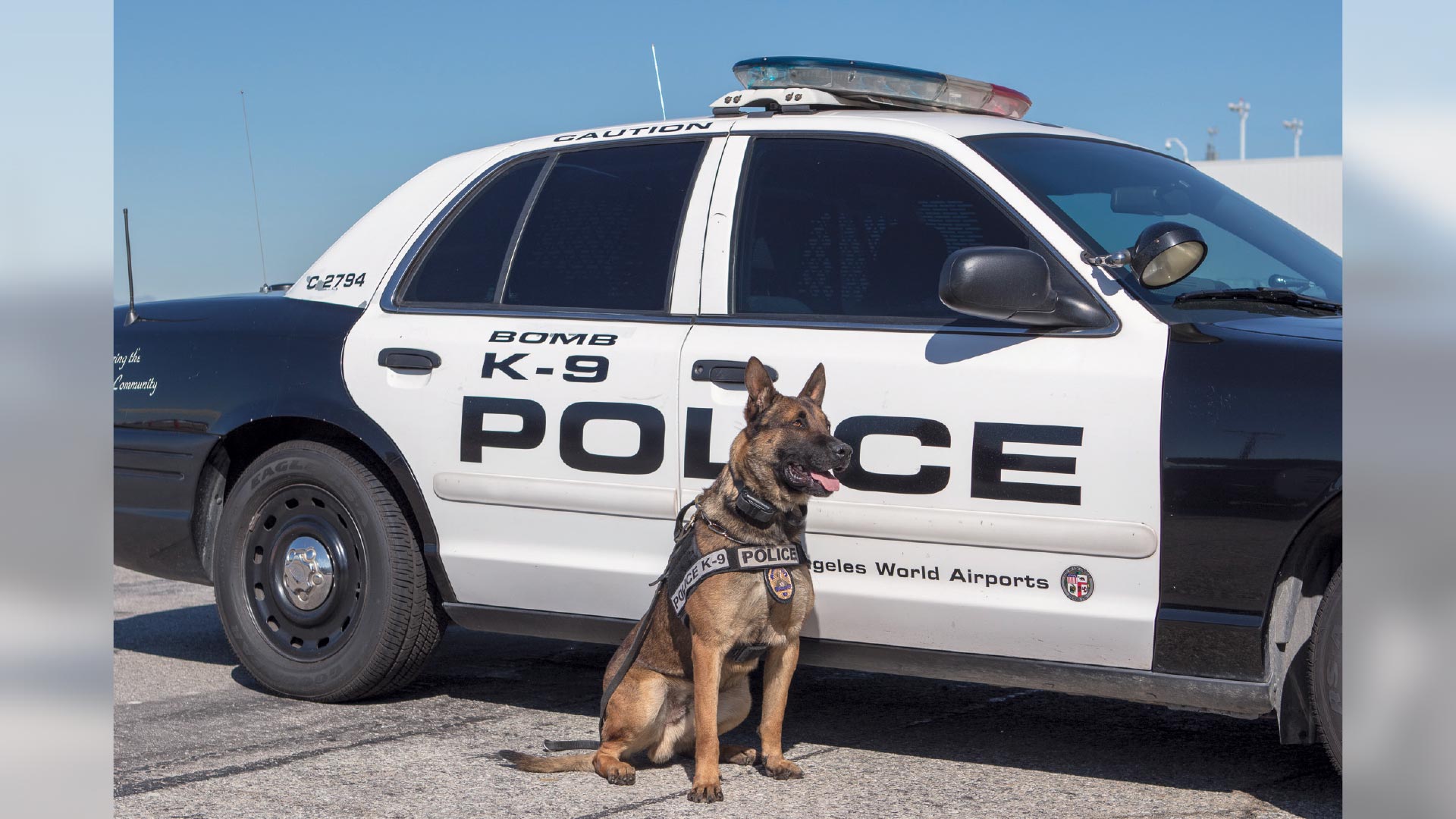
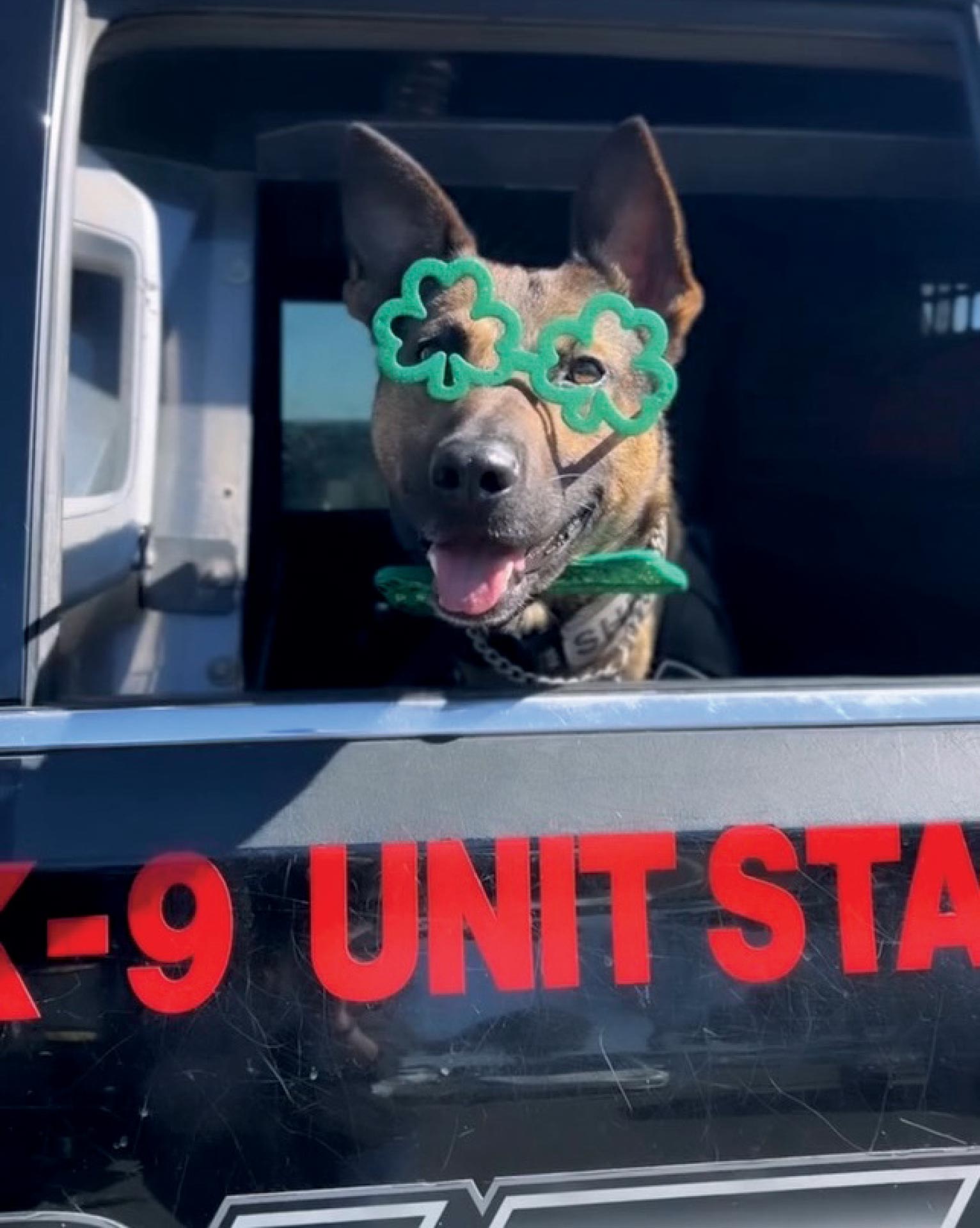
A Deep Bond
While there can be misconceptions surrounding their use, and there is no doubt that the work K-9s do is serious business, the general fact remains that people love dogs, the most popular companion animal in the U.S. That means they can play an important role in community relations for many law enforcement agencies. Sharing dramatic or amusing photos on social media and making appearances at community events to demonstrate their skills allow K-9 units to positively interact with the people they serve and help humanize their officers in the public eye. Given dogs’ innate predisposition to connect with and understand people, some agencies also employ certain K-9s specifically as therapy animals or community relations dogs, with no enforcement duties beyond helping to defuse stressful situations and support officers and community members with their friendly presence.
The handlers who work with K-9s daily also benefit from that connection. “K-9s are very loyal and fun to spend time with,” says Cloward, who has been working with dogs for 38 years, handling three K-9s during his 26-year police career and then continuing on as a trainer and consultant. “The bond between handler and K-9 is like no other. I spent more time with my K-9s than I did with my family. My K-9 was there for me and I was there for him. He counted on me to care for him, and I in turn counted on him to lay down his life for me.”
McLeod, who has been assigned to the LAXPD K-9 Unit since 2002 and is currently working with his fifth canine partner, agrees: “It has been so enjoyable working with each of my canine partners over the last 22 years. Earning each other’s trust has always been special to me in order to ultimately keep officers and citizens safe.”
Pfannenstiel, who has been assigned to SDPD’s Canine Unit for 10 years and currently oversees its 35 K-9 teams as training sergeant, says that helping handlers and dogs develop their partnership and be their best is one of his favorite parts of the job. “The most rewarding aspect is you get out what you put in. Handlers should strive to improve every day, not just for themselves, but for the communities they serve. I find great satisfaction in training handlers to problem-solve and master training techniques they never thought possible.”
Cloward echoes this sentiment, listing as his favorite parts of the job “the satisfaction of watching a young canine that knows nothing and training it to a finished product, and the enjoyment of doing the same with handlers who are learning right alongside the K-9.”

Four-Legged Force Multipliers
Asked what he wants everyone to know about K-9s, Pfannenstiel directly addresses some of the false beliefs underlying misguided attempts to limit their use. “Canine units implement checks and balances to ensure they function at a high level, including passing yearly tests and certifications,” he says. “De-escalation efforts are only partially in the hands of the police; the subject must also be willing to cooperate and surrender. If all subjects choose to surrender, no one would be harmed or injured. Police dogs are not used as punishment tools; they assist in locating violent, armed subjects, helping to prevent officer-involved shootings. A police dog is primarily utilized as a locating tool.”
McLeod’s summary of K-9s’ importance to law enforcement is clear and succinct: “Canine teams are a force multiplier and help to ensure the safety of the general public, employees and officers.”
“I could have been injured or maybe even killed had I not had my K-9,” Cloward attests. “I know there are many handlers out there who could and would tell you the same thing. Our dogs are a part of our family, our law enforcement family. When we lose one, we all feel the pain of that loss.”

